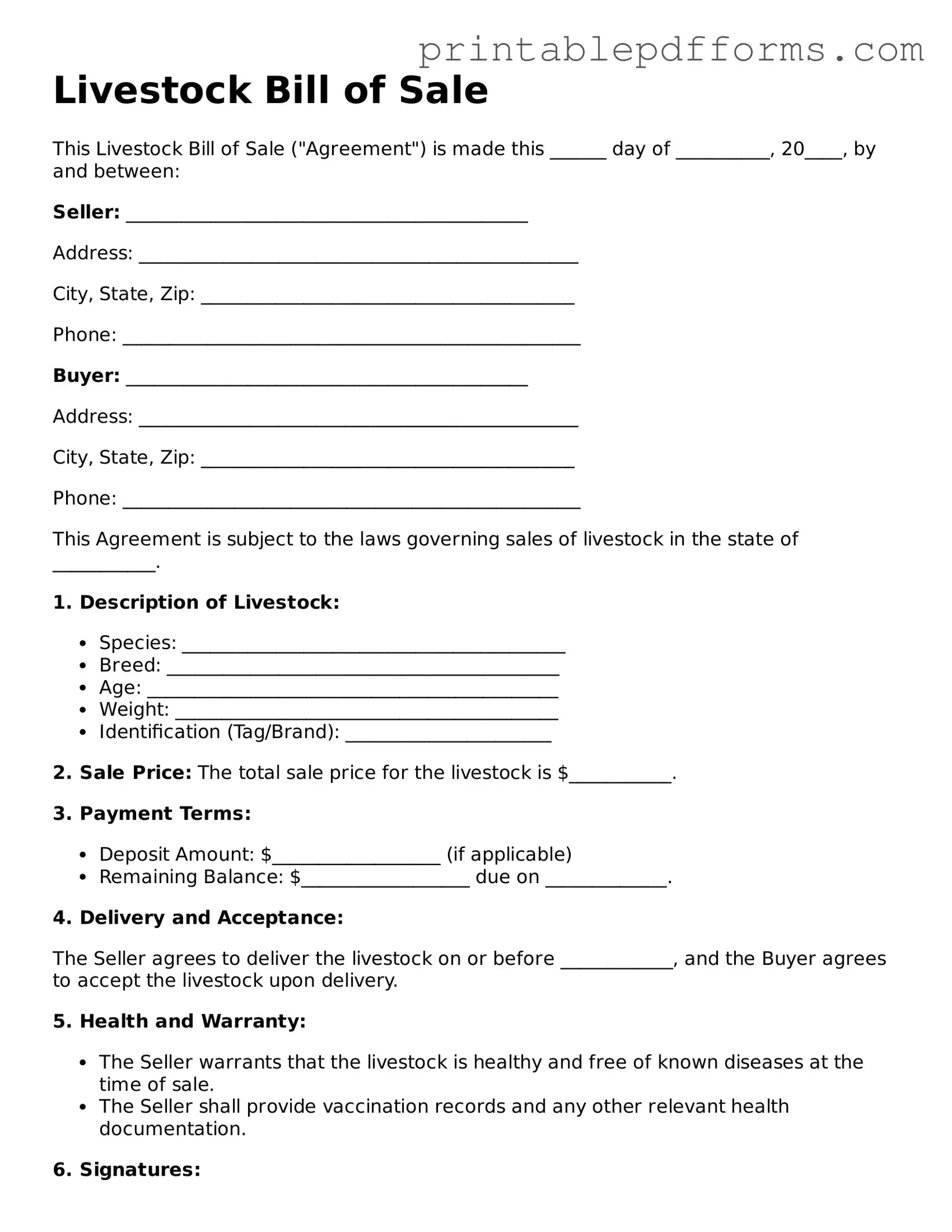Livestock Bill of Sale
This Livestock Bill of Sale ("Agreement") is made this ______ day of __________, 20____, by and between:
Seller: ___________________________________________
Address: _______________________________________________
City, State, Zip: ________________________________________
Phone: _________________________________________________
Buyer: ___________________________________________
Address: _______________________________________________
City, State, Zip: ________________________________________
Phone: _________________________________________________
This Agreement is subject to the laws governing sales of livestock in the state of ___________.
1. Description of Livestock:
- Species: _________________________________________
- Breed: __________________________________________
- Age: ____________________________________________
- Weight: _________________________________________
- Identification (Tag/Brand): ______________________
2. Sale Price: The total sale price for the livestock is $___________.
3. Payment Terms:
- Deposit Amount: $__________________ (if applicable)
- Remaining Balance: $__________________ due on _____________.
4. Delivery and Acceptance:
The Seller agrees to deliver the livestock on or before ____________, and the Buyer agrees to accept the livestock upon delivery.
5. Health and Warranty:
- The Seller warrants that the livestock is healthy and free of known diseases at the time of sale.
- The Seller shall provide vaccination records and any other relevant health documentation.
6. Signatures:
By signing below, both parties acknowledge that they have read, understood, and agree to the terms of this Agreement.
______________________________
Seller's Signature
Date: ____________
______________________________
Buyer's Signature
Date: ____________
This Agreement constitutes the entire understanding between the parties regarding the subject matter herein and supersedes all prior discussions or agreements.
